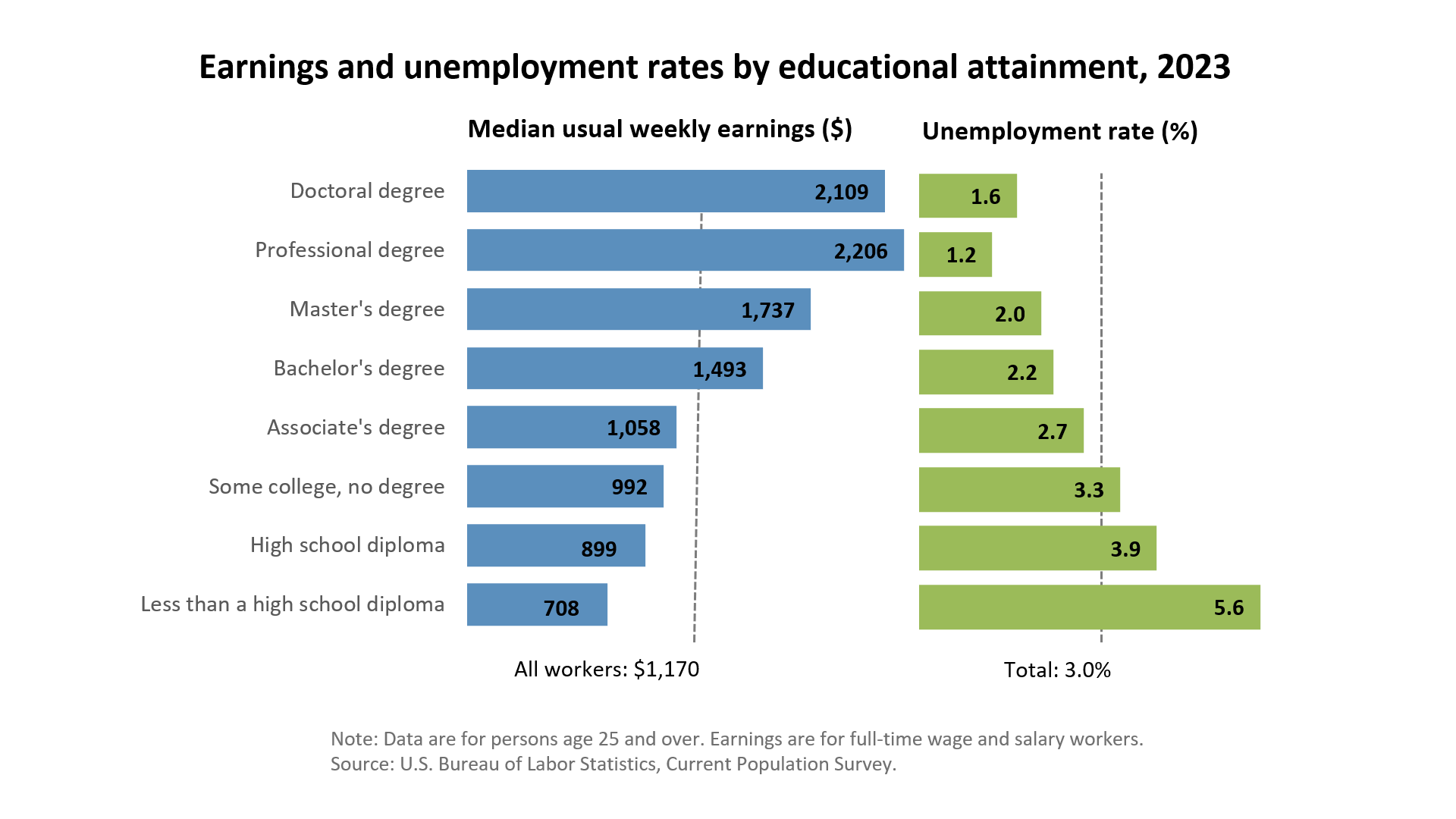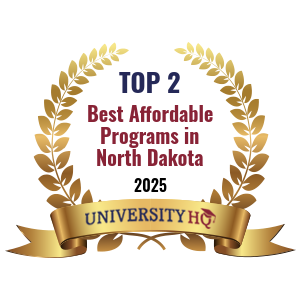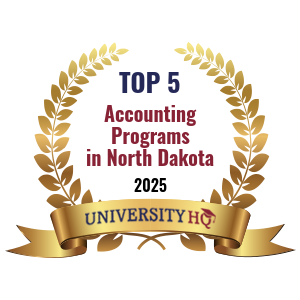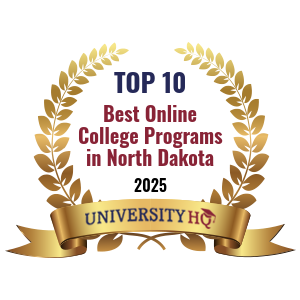University Headquarters (HQ) is an industry-leading, independent educational organization that provides independent college rankings using a proprietary formula to create first class unbiased rankings. The team at University HQ strives to provide accurate and trustworthy rankings that highlights the best programs.
Get Matched With Online Colleges
Minot State University is unusual in one area. Despite being a four-year university, it also offers 2-year degrees to students enrolling in associate degree programs. This is a public state university within the small town of Minot, North Dakota. MSU offers campus housing, which makes it much easier for you to get used to your new home. If you live in the dorms, you’ll be much closer to other students on-campus and events that take place there, as well.
Search All Programs
Overview of Minot State University
The student population is just over 3,100, with a low student-to-faculty ratio of 11 to 1. Along with associate degrees, MSU awards certificates for programs shorter than one year, bachelor’s degrees, postbaccalaureate certificates, master’s degrees, and post-master’s certificates.
If you come to the school for a visit, you’ll see a stadium in the middle of the academic buildings and, just to the east, the Lutheran Campus Ministry.
General Information
| School Type | Public |
|---|---|
| Campus Setting | Town: Remote |
| Campus Housing | Yes |
| Student Faculty Ratio | 11:1 |
| Graduation Rate | 45% |
| Year Founded | 1913 |

Student Enrollment
Total Students3,125
2,836
289
Undergraduate Student
Male 1,106
Female 1,730
Graduate Student
Male 113
Female 176
Explore Map
Top Rankings For Minot State University
Admissions
APPLICATIONS798
ACCEPTANCE535
Acceptance Rate67%
Enrollment 401
| Admissions | |
|---|---|
| Application Fee | $35 |
| High School GPA | Required |
| High School Rank | Recommended |
| High School Transcripts | Required |
| College Prep Courses | Required |
| Recommendations | NA |
| SAT/ACT | Required |
| TOEFL (Test of English as a Foreign Language) | Required |
| Application Deadline | Rolling |
| Common Application Accepted | No |
Tuition Cost & Financial Aid
The sticker price combines the total cost of attending Minot State University for a year. This includes tuition, books, supplies, room, board, and other charges. The total for the 2019-2020 year was $19,386.
Universities also track the average net price charged to families. This is the total cost to the student after financial aid is applied. For the 2018-2019 year, this was $11,635. However, because eligibility for financial aid is often based on a family’s income, you can find a breakdown of the average net cost for families based on their income. Families who earned between $30,001 and $48,000 paid a net price of $8,187, while families who earned more than $110,000 paid closer to $14,200.
At MSU, 90% of first-time students qualified for financial aid. Slightly less (84%) received an average of $4,246 in grants and scholarships and 75% received institutional grants and scholarships averaging $2,228.
| Average net price | 2018-2019 |
|---|---|
| Net Price | $11,635 |
| Average Total Aid | $4,246 |
| Students Receiving Financial Aid | 90% |
| Room & Board | $7,144 |
Sticker Price
- Tuition In-State - $7,592
- Tuition Out-of-State - $7,592
- Books and Supplies - $1,100
- Room & Board - $7,144
- Other - $3,550
Academics
If you’re worried that you might have a time conflict, especially if you plan to work while you attend school, then you’ll be happy to know that there is the option of attending some classes online. While this isn’t an option for every class, it’s always good to know when a school can allow you a more flexible schedule. That’s one more worry off your plate.
However, you’ll also want to know if the school provides everything else their freshmen need. One way to find out is to check out some of the statistics that universities and colleges keep track of. Three of them, specifically, speak to how well these schools are carrying out their job. These are the retention rate, which measures the percentage of first-year students who return to the university in their second year and the graduation rates, which measure the percentage of students who graduate within four years and six years.
The retention rate at Minot State University is 72%, which is quite high. The 4-year graduation rate is 17% and the 6-year graduation rate is 37%, which are low but don’t take into account students transfers.
Retention
Rate
4 year
Graduation
Rate
6 year
Graduation
Rate
Student Population Total
Student Population 3,125
2,836
289
Most Popular Programs & Majors
(# of Diplomas Awarded by Subject)
| All Business Majors | 145 Total Graduates / 27% |
|---|---|
| Business Administration and Management, General | 69 Graduates |
| Accounting | 16 Graduates |
| Marketing/Marketing Management, General | 16 Graduates |
| Management Information Systems, General | 15 Graduates |
| All Education Majors | 93 Total Graduates / 17% |
| Elementary Education and Teaching | 37 Graduates |
| Physical Education Teaching and Coaching | 13 Graduates |
| History Teacher Education | 6 Graduates |
| English/Language Arts Teacher Education | 5 Graduates |
| Mathematics Teacher Education | 5 Graduates |
| Music Teacher Education | 5 Graduates |
| Health Professions and Related Programs | 90 Total Graduates / 16% |
| Registered Nursing/Registered Nurse | 50 Graduates |
| Communication Sciences and Disorders, General | 18 Graduates |
| Substance Abuse/Addiction Counseling | 10 Graduates |
| Radiologic Technology/Science - Radiographer | 5 Graduates |
| Public Administration and Social Service Professions | 50 Total Graduates / 9% |
| Social Work | 50 Graduates |
| Homeland Security, Law Enforcement, Firefighting and Related Protective Services | 34 Total Graduates / 6% |
| Criminal Justice/Safety Studies | 34 Graduates |
| All Other Diplomas | 25% |
Outcome & Salary
All students coming into college are hoping to graduate with a good job and make a decent income. While we can’t see into the future to know how your college experience will turn out, you can consider how other graduates have done when deciding if it’s worth it to attend a specific college. For example, Minot State University graduates have early-career salaries of $38,800 and mid-career salaries closer to $58,700.
Now, the average 4-year cost of education at MSU is $46,540, which you can use to discover what these graduate’s return on investment (ROI) looked like. Based on the numbers, their 10-year salary earning potential is $630,100 and their 20-year salary potential is $1,217,100. If you deduct the cost of their education, you’ll see that their 10-year projected ROI is $583,560 and their 20-year projected ROI is $1,170,560.
On the other hand, high school graduates who choose to go straight to work have different a different performance when it comes to earnings. Their national average salary is $38,792, their 10-year projected income is $387,920, and their 20-year projected income is $775,840.
| Graduates Salary | |
|---|---|
| College Grads Early Career Salary | $38,800 |
| College Grads Average Salary | $63,010 |
| College Grads Mid Career Salary | $58,700 |
| Return on Investment (ROI) | |
|---|---|
| 10 Year Salary Earnings Potential | $630,100 |
| 20 Year Salary Earnings Potential | $1,217,100 |
| Cost of Education (Net Price) 4 Year | $46,540 |
| 10 Year Projected ROI | $583,560 |
| 20 Year Projected ROI | $1,170,560 |
| No College Education Salary Comparison | |
|---|---|
| National Average Salary | $38,792 |
| 10 Year Projected Income | $387,920 |
| 20 Year Projected Income | $775,840 |

Photos & Videos
sources:
Related Top College Resources













